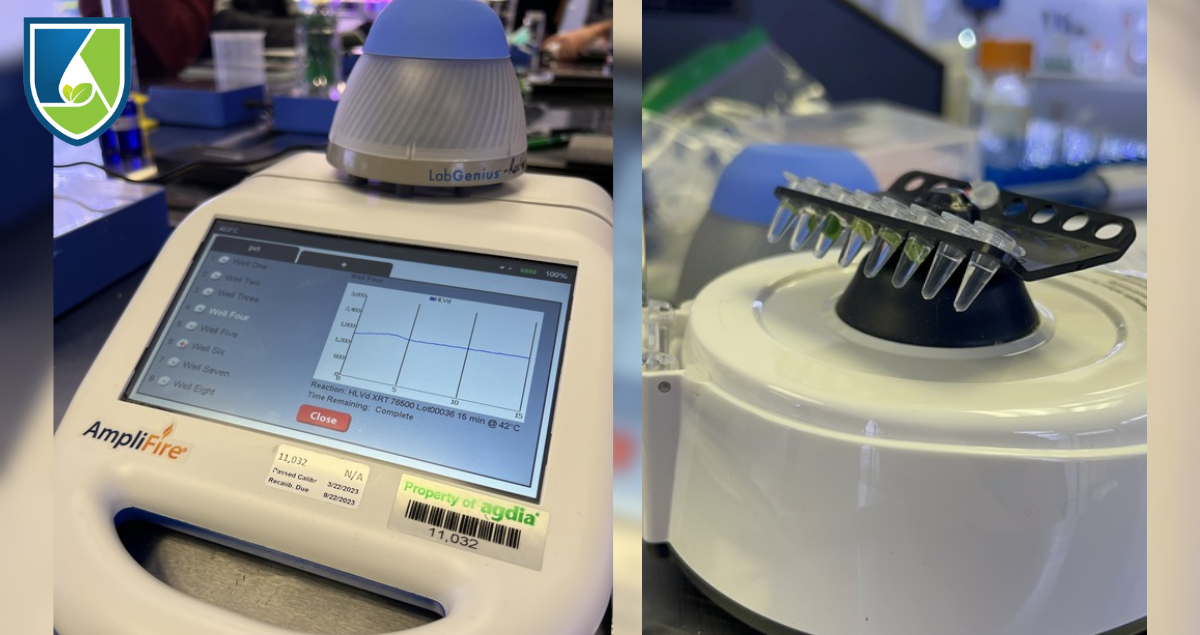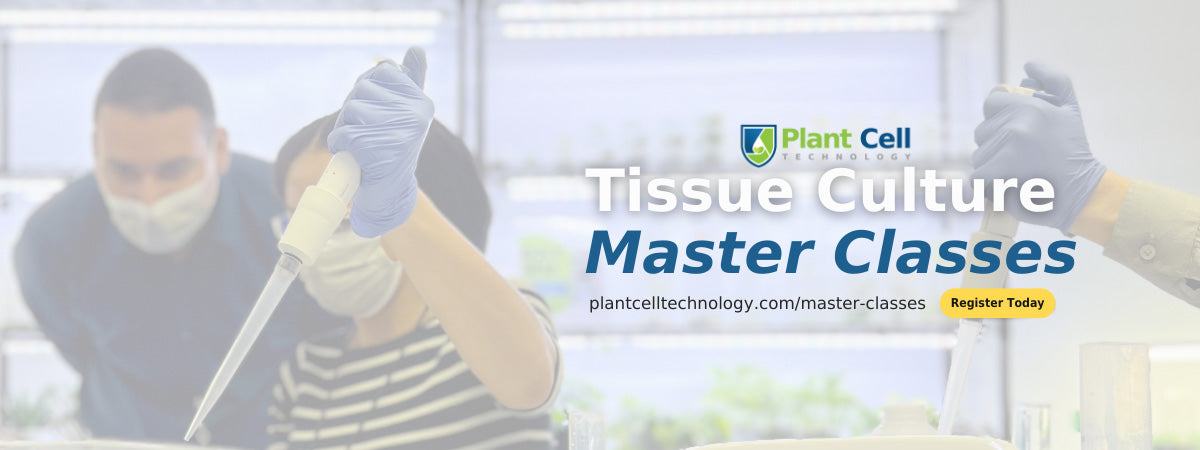
Testing Cannabis Plants for HpLVD and Its Importance
As a content and community manager, I leverage my expertise in plant biotechnology, passion for tissue culture, and writing skills to create compelling articles, simplifying intricate scientific concepts, and address your inquiries. As a dedicated science communicator, I strive to spark curiosity and foster a love for science in my audience.


Introduction
HpLVd viroid is a single-stranded infectious RNA. It was first identified in hops by the scientist, Schmidt, in 1966. The viroid is widely known to cause Dudding diseases in plants. In Cannabis, the viroid infection was identified in 2017 in California.
The prevalence of hop latent viroid (HpLVd) is a major concern for hop and cannabis cultivators worldwide, with significant yield losses reported in cannabis-growing operations throughout North America.
Many studies suggest that the viroid is transferred to a healthy plant from infected propagating material. HpLVd transmission in hops is more efficient using tools (e.g., pruning shears) compared to natural abrasions caused by plant contact.
Also, there is no evidence suggesting that aphids are responsible for the transmission and long-distance spread of HpLVd in hops.
HpLVd is a deadly pathogen that can wipe out your plants and cause you huge losses. This is mainly due to the characteristic of remaining in the latent phase and get unnoticed for not even days but for months,
And, until you realize the viroid has sneaked into your Cannabis farm, it would be too late, the viroid might have infected your whole crop.
In this article, we discuss the transmission of HpLVd, its symptoms in Cannabis plants, and testing plant for the viroid. Additionally, you also learn about some ways available to detect viroid in your crop.

Understanding The Characteristics of HpLVd And Transmission
Hop latent viroid (HpLVd) is a single-stranded, circular, infectious pathogen. It belongs to the genus Cocadviroid and appears usually on Hop.
The viroid can be transmitted through different modes:
- Pruning shears and other tools: The virus can easily be transmitted from plant to plant through the use of contaminated pruning shears or other tools. This is one of the most common modes of transmission.
- Plant-to-plant contact: HpLVd can also be spread through physical contact between infected and healthy plants. This can occur naturally or as a result of human intervention.
- Grafting: Grafting infected plant material onto healthy rootstock is another mode of transmission.
- Pollination: There is some evidence that HpLVd can be transmitted through pollination, although this is still being studied.
Additionally, they can also be transferred by the use of infected, but asymptomatic propagation material, such as infected seeds.

Symptoms Caused by HpLVd and Prevention
HpLVD does not produce any visible symptoms instantly as soon as it affects the plants. It can remain dormant in the plant without showing any signs for months. However, at later stages, you can detect the viroid in your Cannabis plant, through symptoms such as:
- Abnormal branching
- Reduced and stunted trichome production
- Leaf chlorosis
- Stunted growth
- Develop smaller and looser buds
- Reduced vigor
- Brittle stems with less flower mass
- Reduced potency
- A 50% reduction in both cannabinoid and terpene production
- Loss of quality and reduction in yields
Collectively the symptoms observed during the infection are known as Dudding.

Prevention of HpLVd
Preventing the transmission and spread of HpLVd is essential for the health and longevity of hop plants. Here are some key steps for prevention and control:
- Regular inspections: Regularly inspecting hop plants for symptoms of infection can help to catch and treat the disease early on.
- Proper sanitation: Ensuring that pruning shears and other tools are properly sanitized between uses can prevent the spread of the virus.
- Quarantine: Isolating infected plants and preventing them from coming into contact with healthy plants can help to contain the spread of the virus.
- Genetic resistance: Breeding hop plants with genetic resistance to HpLVd can help to prevent infection and spread of the virus.

Detection Methods To Catch HpLVd Infection in Cannabis and Why Is It Essential?
Detection of Hop latent viroid (HpLVd) infection is essential for several reasons:
- HpLVd can cause significant yield losses in cannabis and hop plants, which can result in significant financial losses for growers.
- Infected plants may not show any visible symptoms, making it difficult to identify infected plants without diagnostic testing.
- Infected plants may act as a reservoir for the viroid, allowing it to spread to neighboring plants and crops.
- Many countries have regulations in place to prevent the spread of plant pathogens, including HpLVd, and growers may be required to demonstrate that their plants are free from the viroid.
- Early detection of HpLVd infection can help growers implement management strategies to prevent the spread of the viroid, such as removing infected plants and implementing strict sanitation measures.

HpLVd Detection Techniques
HpLVd can be managed and prevented by using healthy propagation material, such as disease-free seeds and propagation material. However, you must test your plant's health for precautionary measures and prevent the spread of disease if present.
The first step in the identification of viroid is screening Cannabis plants and observing any morphological deformities.
However, HpLVd (Hop latent viroid) infection in cannabis can be challenging to detect because the symptoms may not always be visible, and the viroid can spread silently without being noticed.
However, several detection methods have been developed to identify HpLVd in cannabis plants.

Visual inspection
Visual inspection is the least reliable method for detecting HpLVd in cannabis plants, but it can still be useful. Growers should inspect the plants for any visible symptoms of HpLVd infection, such as stunting, yellowing, or curling of leaves. However, it's essential to note that HpLVd may not always display visible symptoms.
Biological indexing
Biological indexing involves inoculating healthy plants with plant sap or tissue from infected plants to test for the presence of HpLVd. This method is labor-intensive and time-consuming and requires maintaining a collection of indicator plants, but it is still considered a reliable method for detecting HpLVd in cannabis plants.
Next-generation sequencing (NGS)
NGS is a new technique used to detect the presence of HpLVd in cannabis plants. This technique sequences all the RNAs present in the plant tissue, including the HpLVd RNA, to identify the viroid.
Molecular detection methods
These methods are based on detecting the presence of HpLVd RNA in plant tissues. Polymerase chain reaction (PCR) is the most common molecular detection method used for detecting HpLVd in cannabis plants. This method amplifies a specific region of the HpLVd RNA and detects the presence of the viroid in the plant samples.

Serological detection methods
Serological methods involve detecting the presence of HpLVd proteins in plant tissues. Enzyme-linked immunosorbent assay (ELISA) is one of the most common serological detection methods used for HpLVd in cannabis plants. ELISA uses antibodies specific to HpLVd proteins to detect the viroid in the plant samples.
Learn Tissue Culture and HpLVd Detection On Your Own By Attending This Cannabis Tissue Culture Master Class
HpLVD detection is a complex process. You need to have proper test procedures, chemicals, and equipment to perform the tests. Further, buying tests, or sending your samples for the disease presence is a time taking and complex approach. By learning this on your own, you can do tests on whatever plants you want and at whatever time.
Further, if you want to get rid of diseases, including viroids, meristem culture is an effective approach. However, again like testing methods, the meristem culture is also a complex approach and requires hands-on experience to perform the process. Meristem cutting in itself is a complicated process and can only be done after learning from an expert.
But where can you get to learn all this?
In our comprehensive Cannabis Tissue Culture Master Class!
It will be a 3-day class organized in alternate months every year. The class will be conducted by one of the legends in the Cannabis Tissue Culture industry with years of experience.
In this class, you won’t only learn how to produce meristem culture and preserve the genetics of your plant, but a range of other topics, including Pathogen remediation, sterilization techniques, synthetic seed technology, and many more.
Here’s our complete curriculum.
This a one of the most popular Master Class, for which booking has already been started. And, for one-on-experience with our tissue culture expert, only a limited number of seats are available.
So, if you are interested in giving a boost to your Cannabis business, then book your seats TODAY!
Blog Categories
View by Level
Popular Blogs

How Samantha Bridges the Gap Between the Nursery and the Lab
The Introduction Building a tissue culture program from the ground up requires more than just scientific knowledge—it requires the grit...
Read More
Understanding The Synthetic Seed Technology
Introduction Let’s be honest: traditional plant propagation can be a logistical nightmare. If you’re working with recalcitrant species—those stubborn plants...
Read MoreSubscribe to Our Newsletter








Join the conversation
Your email address will not be published. Required fields are marked